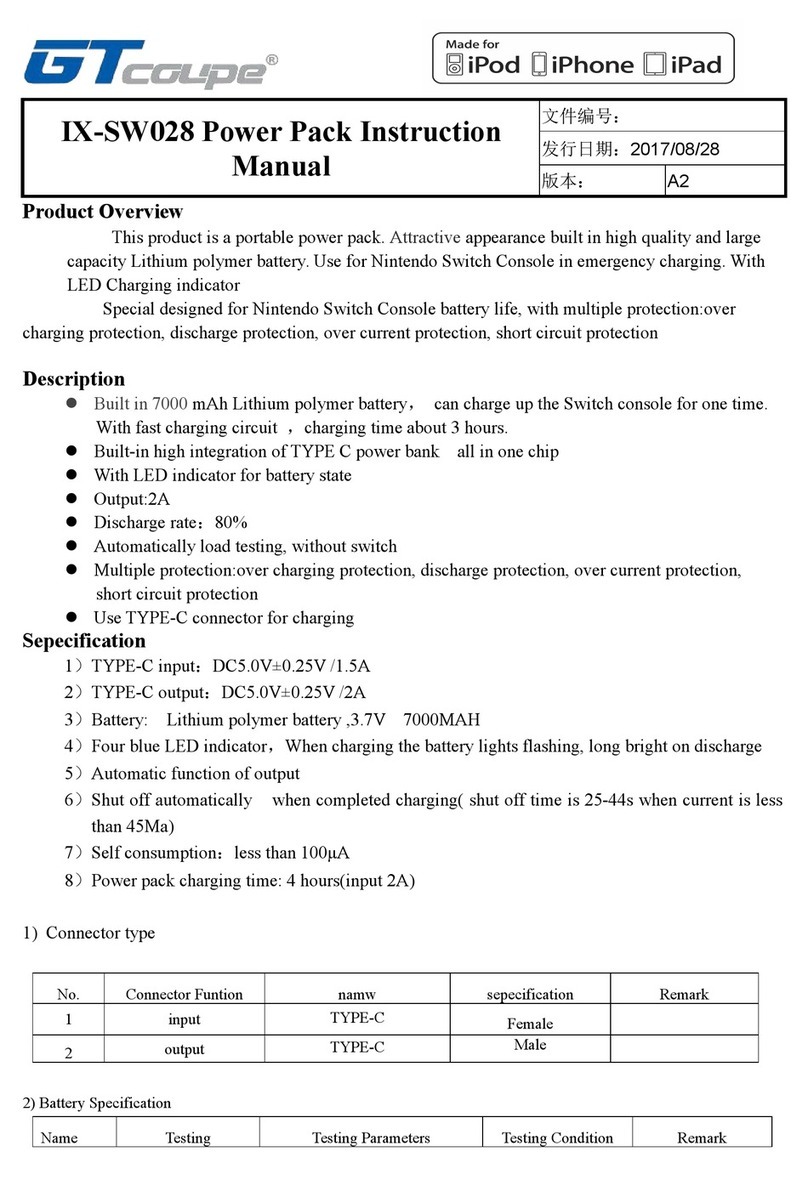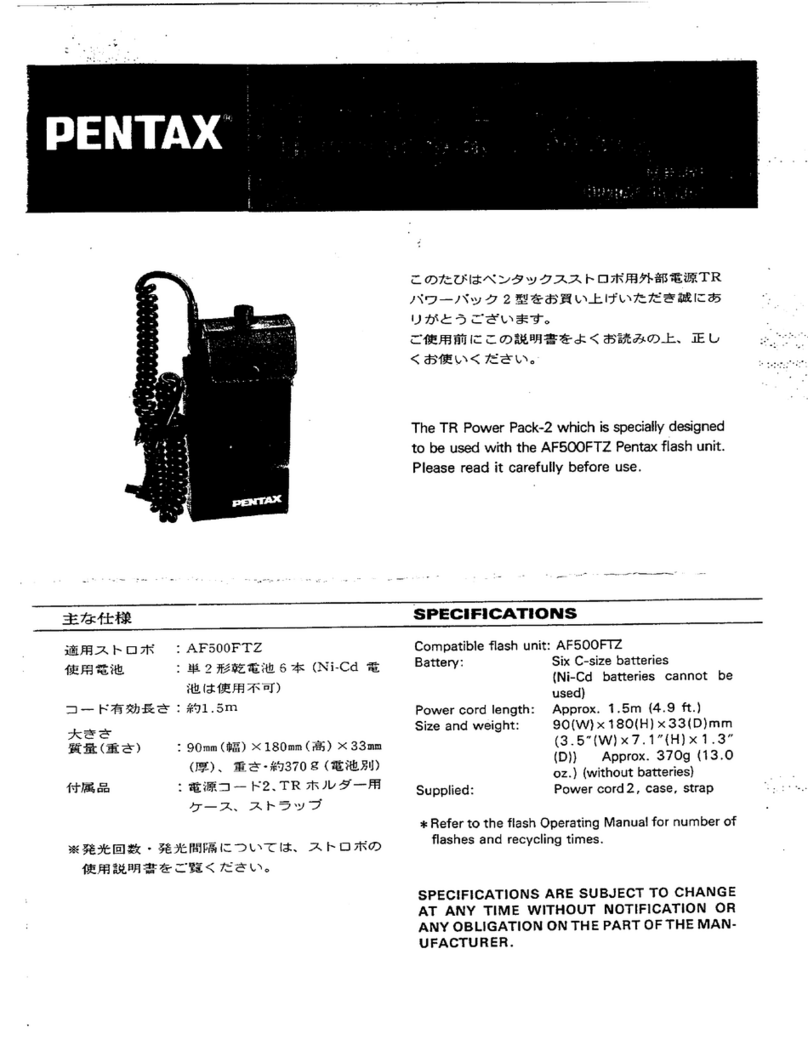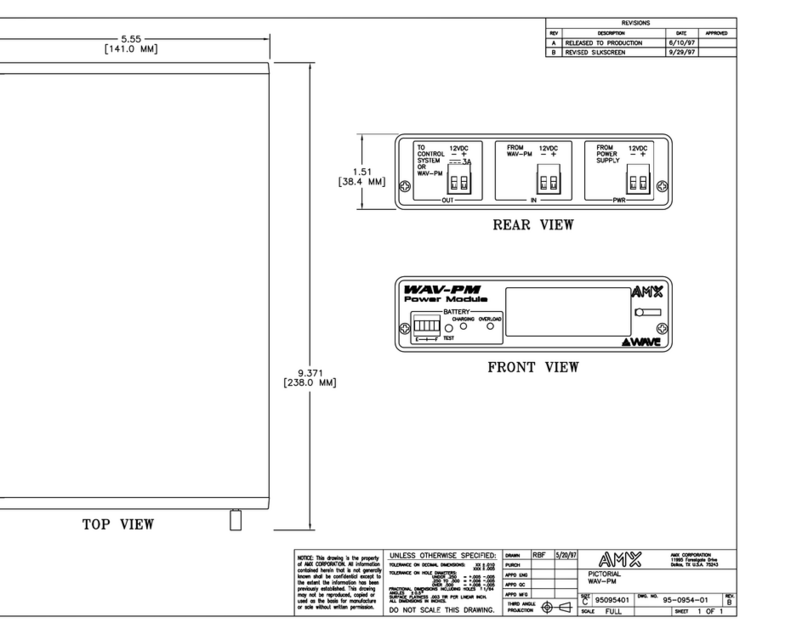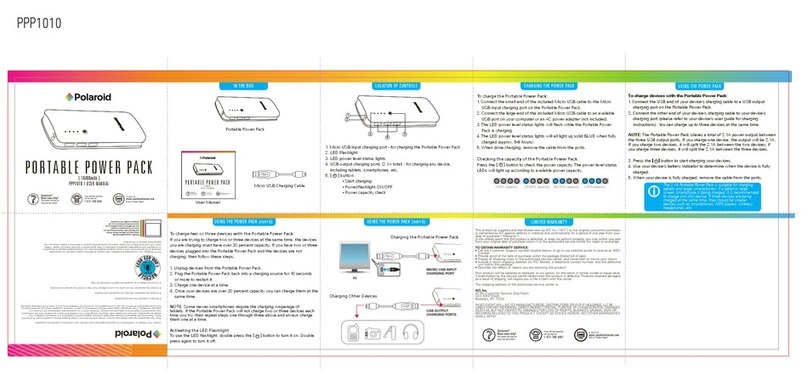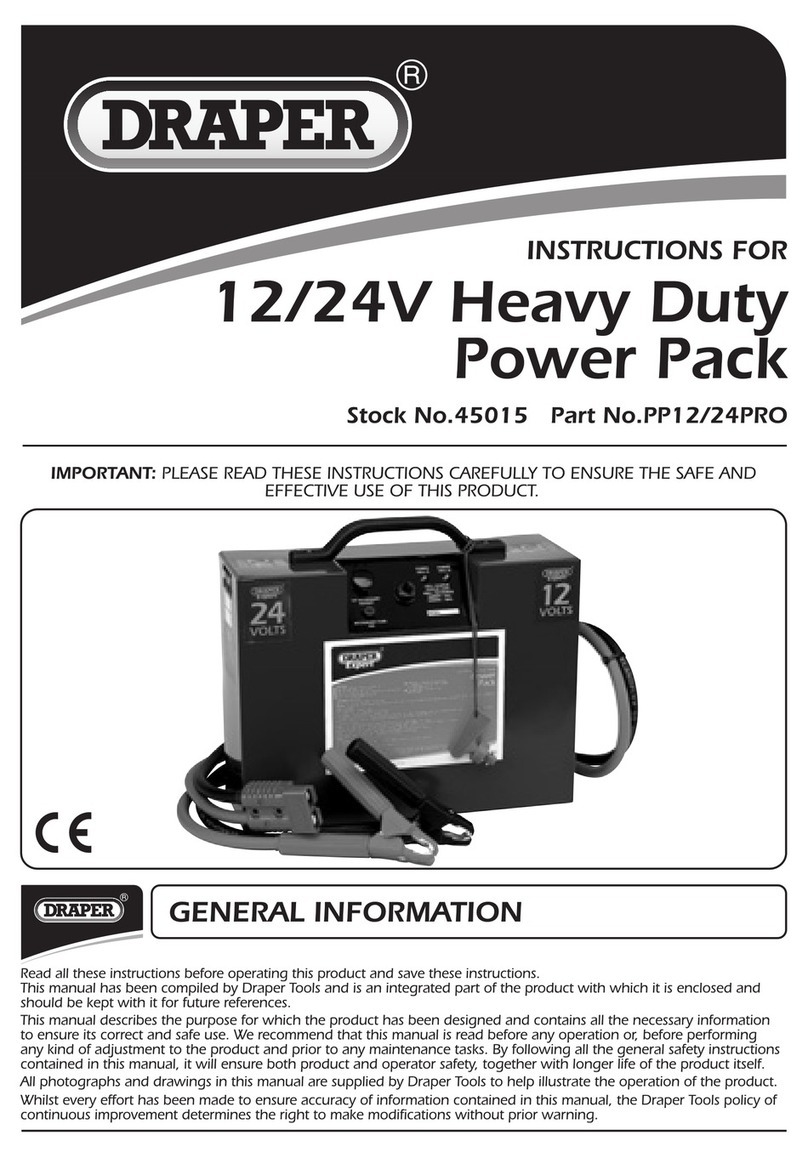
For full warranty information, refer to the AMX Instruction Manual(s) associated with your Product(s).
5/12
©2012 AMX. All rights reserved. AMX and the AMX logo are registered trademarks of AMX.
AMX reserves the right to alter specifications without notice at any time.
3000 RESEARCH DRIVE, RICHARDSON, TX 75082 • 800.222.0193 • fax 469.624.7153 • technical support 800.932.6993 • www.amx.com
Connect the PCS2 output and power ports to the Central Controller's input/output (I/O) ports,
as illustrated in FIG. 4.
PCS2 to Television Controllers
FIG. 5 illustrates the connections between the PCS2 to television controllers.
Calibration
The PCS2 works by setting a threshold.
• The STANDBY threshold is set be-tween the current draw of the OFF state and that of
the STANDBY state.
• The ON threshold is then set between the current draw of the STANDBY state and the
ON state.
The PCS2 contains two major circuits, each independent of each other. Each if these major
circuits contain two sub-circuits, the ON and STANDBY circuits.
The PCS2 has an in-line 10 A fuse for protection. This will allow one, or both major circuits to
draw a maximum of 10 A (1,200 W) total.
The state status for each of the major circuits of the PCS2 is:
• STANDBY is lit when the sensed current level is above STANDBY threshold.
• STANDBY remains lit (regardless of its setting) when the ON LED lights.
• ON is lit when current is above the ON threshold.
• The circuit (both the ON and STANDBY) can differentiate between 20 mA and 1 A.
Anything above 1 A is sensed as 1 A, regardless if it is 2 A, 6 A, or 10 A.
• It is not logical for ON to light before STANDBY. As a result, the circuit is designed so
that if the ON is lit, the STANDBY will also be lit, regardless of its setting.
Note: When extreme accuracy is required for calibration, allow the PCS2 to warm up for a
minimum of 15 minutes before calibration. The following procedures are used for both circuit
1 and circuit 2. Calibrate each circuit independently.
If the device only has an ON state, either STANDBY or ON can be used in the following
steps.
1. Plug the PCS2 into a power source.
2. Connect the device.
3. Turn both POTS all the way counter clockwise. At a maximum, this is 20 full turns.
The stop (end) can be detected by a subtle clicking sound and feel.
4. Set the device to the STANDBY power mode and wait 2-seconds. STANDBY power
mode is obtained by plugging the unit into an electrical port and not turning the power
switch ON.
5. Turn the PCS2 STANDBY POT clockwise until the STANDBY LED lights.
6. Slowly turn the POT counterclockwise until the LED goes out. Then, very slowly turn
the POT clockwise until the LED lights.
The "turn-on-threshold" has just been determined.
It is best not to set precisely on this threshold, so turn the POT a fraction more clock-
wise.
This fractional extra turn can be a bit larger for higher power devices and may be
almost negligible for very low power devices.
7. Turn the devices off and wait 2 seconds.
Note: Because of hysteresis (the analog circuit components time for changing states)
the turn-on and turn-off thresholds will not be exactly the same.
8. If the LED is still on, repeat steps 6 through 8 until the LED is not on when the device is
turned off.
9. Perform steps 1 through 8 for the ON circuit level.
10. Repeat steps 1 through 9 for the second PCS2 circuit's STANDBY and ON circuit
levels.
Operation
When properly calibrated, the PCS2 senses current levels from connected sources that have
one or two levels of power consumption.
The PCS2 STANDBY LED is ON when the following occurs:
• STANDBY is lit when the sensed current level is above STANDBY threshold.
• STANDBY remains lit (regardless of its setting) when the ON LED lights.
• STANDBY threshold cannot be set less sensitive than ON threshold.
This requires that the STANDBY circuitry be calibrated for levels between 20 mA and 1 A in
order to differentiate when a connected unit is in a STANDYBY or ON mode.
• ON is lit when current is above the ON threshold.
• The circuit (both the ON and STANDBY) can differentiate between 20 mA and 1 A.
Anything above 1 A is sensed as 1 A, regardless if it is 2 A, 6 A, or 10 A (LED ON =
output switch closed).
• It is not logical for ON to light before STANDBY. As a result, the circuit is designed so
that if ON lights, the STANDBY will light, regardless of its setting.
When connecting a unit/system to the PCS2, be aware that a one or two second PCS2
circuitry stabilization consideration must be accounted for.
During transitions between states, the PCS2 may take 1 to 2 seconds to stabilize and its
initial output indication may be incorrect. Failure to account for this possible delay may cause
the Axcess or Axcent2system to repeatedly cycle power on the unit being sensed.
Programming
When properly calibrated, the PCS2 senses current levels from sources that have one or two
levels of power consumption.
When connecting a unit/system to the PCS2, be aware that a 1 or 2 second PCS2 circuitry
stabilization consideration must be accounted for.
During transitions between states, the PCS2 may take 1 to 2 seconds to stabilize and its
initial output indication may be incorrect.
Failure to account for this possible de-lay may cause the Central Controller to repeatedly
cycle power on the unit being sensed.
FIG. 4 PCS to Axcent, Axcent2, or Axcent3
FIG. 5 PCS2 to television controllers
COM
STBY
ON
GND
I/O 1
I/O 2
PCS2
Axcent
Axcent2
Axcent3
PCS2
COM
STBY
ON
I/O 1
I/O 3
Television
GND
I/O 2
controllers
I/O 4
PWR



